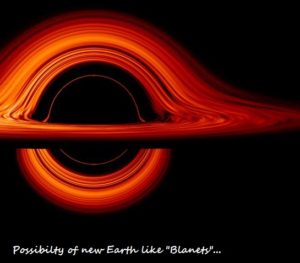Black Holes have always held great mysteries with them.
These precarious places in the space where gravity pull is so much that even light can not get out, also have safe zones. This came into light last year by a team of highly intellectual astronomers.
It was believed that thousands of planets could be orbiting these black holes within these safe zones.
This year, a team led by Keiichi Wada of Kagoshima University in Japan has come up with the reasoning behind the formation of these planets.
Or should we say “blanets”?
Yes, you heard it right. ‘Blanets’ is the name given to these planets orbiting around the black holes and formed from the grains of dust whirling around the black holes.
This new study done by the astrophysicists in Japan attempts to lift curtains from the mystery of the formation of these blanets within the restrains of a black hole’s gravitational boundaries.
As per the study:
Our results suggest that blanets could be formed around relatively low-luminosity active galactic nuclei (AGNs) during their lifetime (. 108 yr). The gaseous envelope of a blanet should be negligibly small compared with the blanet mass. Therefore, the system of blanets are extraordinarily different from the standard Earth-type planets in the exoplanet systems.
Also here is an excerpt from the print study on arXiv highlighting the formation of blanets:
We proposed that a new class of planets, blanets (i.e., black hole planets) can be formed, provided that the standard scenario of planet formation is present in the circumnuclear disk. Here, we investigated the physical conditions of the blanet formation outside the snowline (rsnow ∼ several parsecs) in more detail, especially considering the effect of the radial advection of the dust aggregates.
These blanets could just be like our Mother Earth or maybe like gaseous giants.
Life on these inexplicable planets is hard for us to imagine right now.

The discovery of these planets may be the stepping stone towards the construction of any innovative device to detect these further.
Get a more detailed view of this discovery here.
Read Next: Bhangarh Fort Incidents
1 thought on “Possiblility of New “Blanets” In the Milky Way and Black Holes”